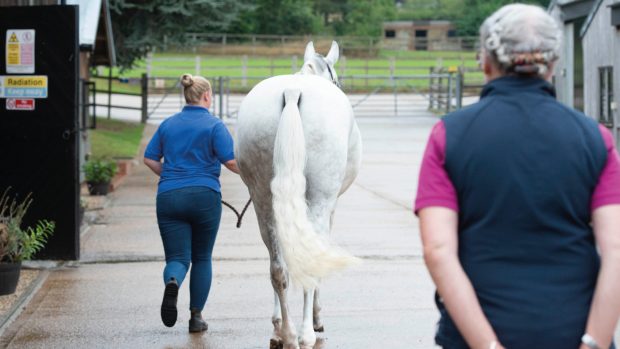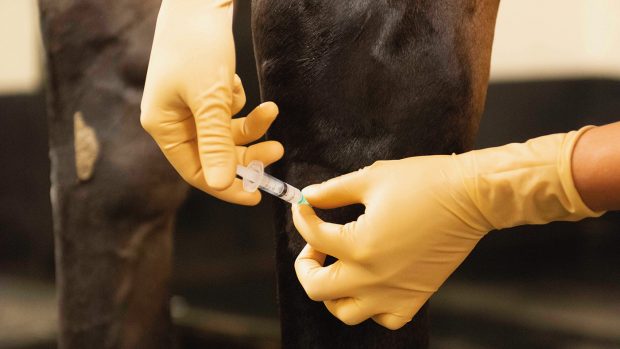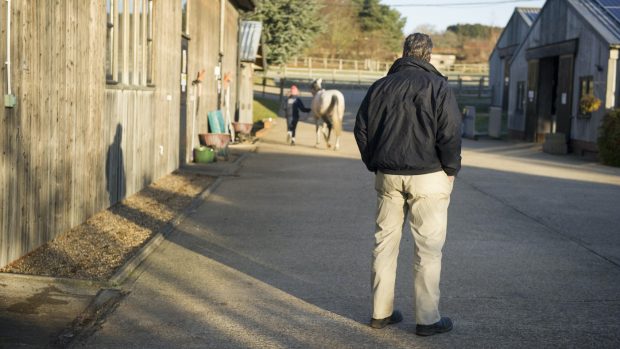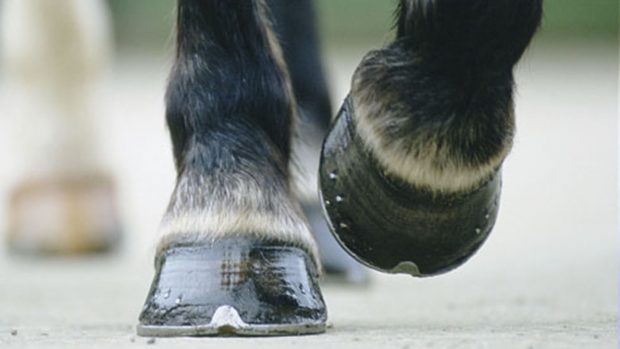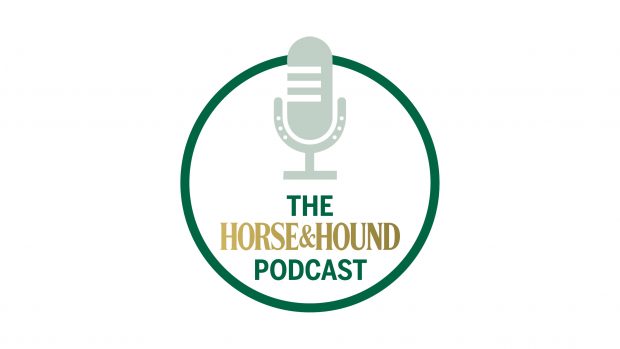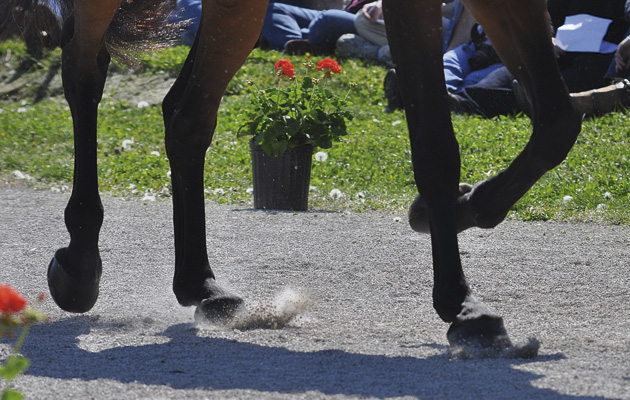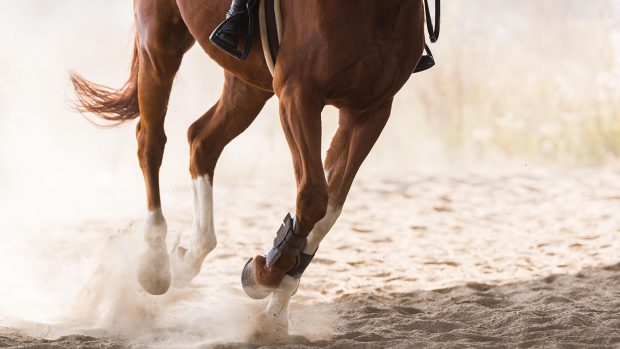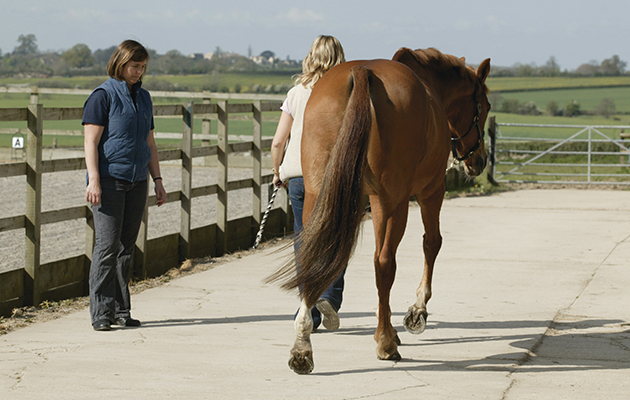Lameness
Lameness in horses is a term used to describe the horse’s gait being adversely affected by pain or a restriction in the typical range of movement. The pain or restriction can originate in the hoof, in the leg or elsewhere in the horse’s body, such as the back or neck. It can range from a subtle change in gait, to the horse being unable to carry any weight on the affected limb. Lameness has been identified as the most common reason for older horses to be put down.
How to trot your horse up for a lameness examination
How to trot-up your horse for the vet
Knowing how to trot-up your horse correctly will make your vet's life much easier when he is trying to assess lameness
0 seconds of 1 minute, 44 secondsVolume 0%
Press shift question mark to access a list of keyboard shortcuts
Keyboard Shortcuts
Shortcuts Open/Close/ or ?
Play/PauseSPACE
Increase Volume↑
Decrease Volume↓
Seek Forward→
Seek Backward←
Captions On/Offc
Fullscreen/Exit Fullscreenf
Mute/Unmutem
Decrease Caption Size-
Increase Caption Size+ or =
Seek %0-9
